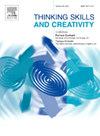Development of 6 - to 17-year-old students’ inductive reasoning: What is the most sensitive period?
IF 3.7
2区 教育学
Q1 Social Sciences
引用次数: 0
Abstract
This paper focuses on inductive reasoning (IR), which strongly influences the effectiveness of learning and is an important predictor of academic achievement. The aims of the study are twofold: first, to develop an easy-to-use, computer-based item bank for everyday educational practice, which can make development of students’ IR skills visible from the beginning of schooling up to adulthood; and, second, to describe IR development, especially focusing on the course of development and the sensitive period. The sample was drawn from 1st- to 11th-grade students (aged 6–17) in 230 Hungarian primary and secondary schools (N = 29,453). The reliability of the computer-based item bank proved to be high: EAP/PV reliability was 0.916. Across all grades, IR development was remarkable; however, the pace of development varied. The developmental trend was identified with the superposition of two logistic curves. The most intensive and sensitive periods were found first in Grade 1 and then in Grade 7. Explicit training in these fast-growing phases may be more effective. There were no gender-level differences in the developmental level of students’ IR in Grades 1 to 8, but parental educational background proved to be important in student developmental level as well as in the developmental path of IR. This study provides evidence that extra training during the early years of schooling may be crucial to boost the effectiveness of learning for later success.
求助全文
约1分钟内获得全文
求助全文
来源期刊

Thinking Skills and Creativity
EDUCATION & EDUCATIONAL RESEARCH-
CiteScore
6.40
自引率
16.20%
发文量
172
审稿时长
76 days
期刊介绍:
Thinking Skills and Creativity is a new journal providing a peer-reviewed forum for communication and debate for the community of researchers interested in teaching for thinking and creativity. Papers may represent a variety of theoretical perspectives and methodological approaches and may relate to any age level in a diversity of settings: formal and informal, education and work-based.
 求助内容:
求助内容: 应助结果提醒方式:
应助结果提醒方式:


